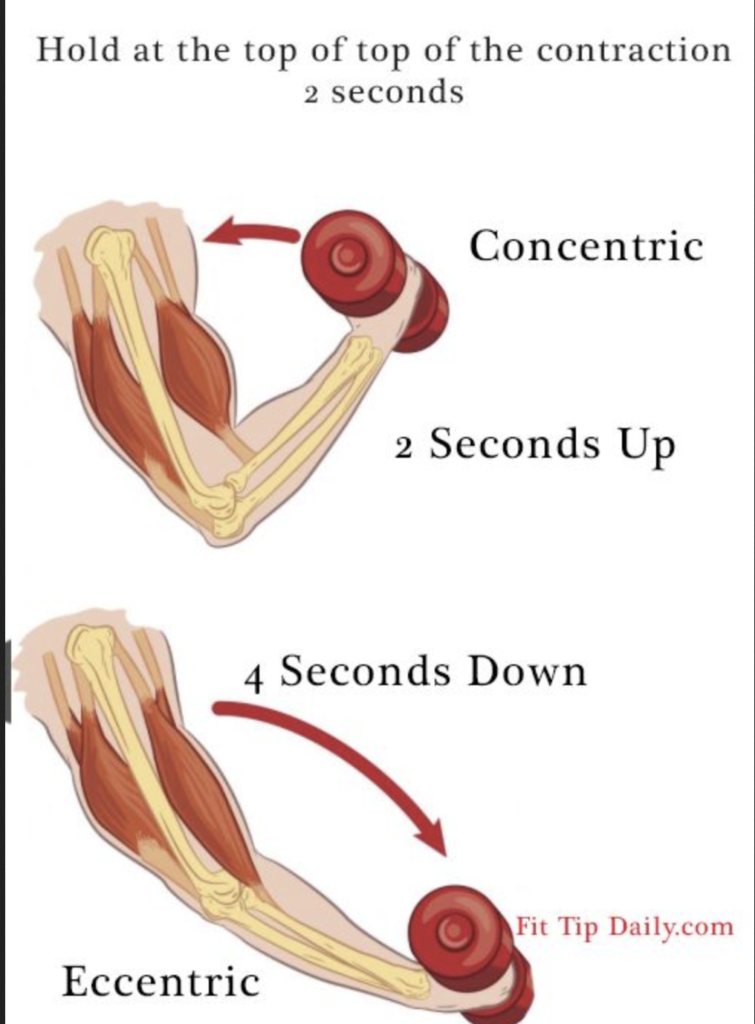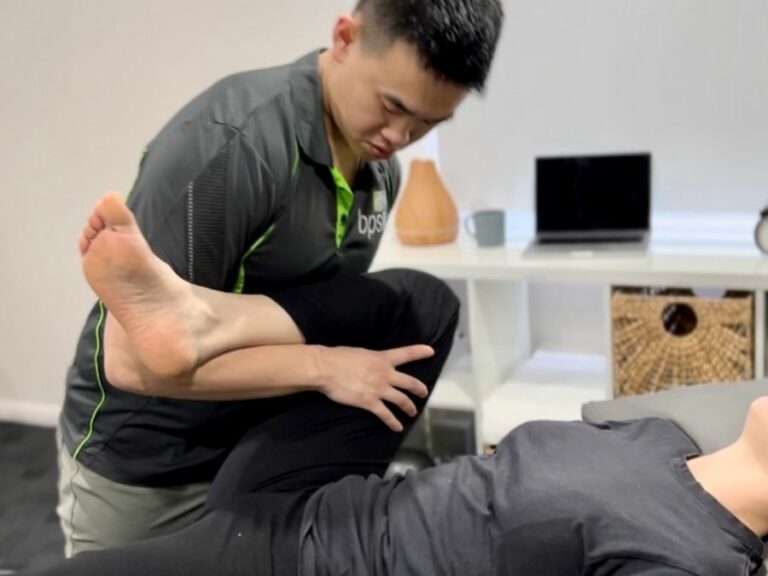Eccentric control has received a lot of attention of late for being the ‘magic exercise’ when it comes to injury prevention. But is it all that it’s cracked up to be? Join us as we deep dive into the world of eccentric movement, uncover the science behind its theory and find out once and for all if eccentric control is the secret weapon in the war against injury!
What is ‘Eccentric Control’?
Firstly, let’s start by defining eccentric movements. Basically, when we move, we have 3 different types or phases of muscle contraction. They are formally called Concentric, Isometric and the Eccentric phases. However, you might have heard respectively the ‘Up Phase’, the ‘Hold Phase’ and the ‘Down (or negative) Phase’ of an exercise.
So, when you hear someone in the gym saying that they are “training negatives,” or “focusing on the down phase,” that means that they are targeting the eccentric phase of movement.
More Detail Please
The Isometric contraction a.k.a. Hold, is that stage that your muscles are engaged but there is no movement, therefore is also called “hold”. A classic example for this stage of movement is the “Plank” exercise, where you are working the muscle but you are static.
The Concentric contraction, or the Up Phase, is where your muscle is generating a movement against the load while shortening its length. To help visualise that stage, think about going up doing a bicep curl. The muscles in front of your arm (bicep muscle) are lifting the weight = shortening size.

The last and arguably the most important phase for strengthening and injury prevention is the one that we will focus on in this article. That is the Eccentric phase. It is when there is a tension being applied to a muscle as it lengthens, similar to an uncoiling spring. It is easier to understand this phase if you think about braking a movement. As in the image example above the bicep muscle is lengthening and now decelerating your arm, slowing down its movement.
Eccentric contractions occur when the body supports its weight against gravity, absorbs a shock, or stores muscle energy for a concentric contraction.
The Eccentric Phase
Now that we know what the different types of muscle contraction are, let’s get clear on why the eccentric phase is purposed to be so essential in preventing injuries.
An extensive body of research indicates that eccentric contractions have a number of unique features that are not present in concentric or isometric contractions. As a result of these unique features, eccentric contractions appear to be more effective than concentric contractions in minimizing muscle atrophy, improving muscle force production, as well as creating an environment conducive to injury prevention when compared to concentric contractions. These unique features are as follows;
There is a plethora of good quality research that shows eccentric contractions have several unique features that a concentric or isometric muscle contraction does not. It is within these unique features that eccentric contractions seem to hold the gold when it comes to being more effective than concentric contraction at minimising muscle atrophy and improving muscle force production as well as creating an environment for injury prevention.
These unique features are as follows;
- Greater forces are generated during an eccentric contraction compared to other contraction types for a given angular velocity (Hortobagyi and Katch, 1990).
- Eccentric contractions require less motor unit activation and consume less oxygen and energy for a given muscle force than concentric contractions (Abbott et al., 1952).
- The metabolic cost required for eccentric exercise is approximately fourfold lower than for the same exercise performed concentrically.
- Reduced cardiorespiratory and hemodynamic responses have been reported following eccentric exercise when compared to concentric exercise at the same absolute workload (Overend et al., 2000; Meyer et al., 2003).
- The neural strategies controlling eccentric contractions considerably differ from concentric or isometric contractions (Duchateau and Baudry, 2014).
…and it’s not just at the level of the contracting muscle that these differences present themselves, there is also a difference at the cortical level including;
- Eccentric muscles contractions have a reduced central activation during maximal eccentric contractions than maximal concentric or isometric contractions.
- This reduced central activation has implications on eccentric coordination: fine motor control in eccentrically biased actions appears more difficult as fewer motor-units are required for the same work (Hoppeler, 2016).
So What Does All This Mean?
This means that during the eccentric phase, the body engages more muscle fibres while using less effort. By focusing on the eccentric phase, you are optimising muscle length for maximal tension development, leading to increases in muscle mass, fascicle length (bundle of muscle fibres) and number of sarcomeres (the basic contractile unit of muscle fibre). In short, your muscles are getting ‘bigger’ with seemingly less effort.
Is It All Just About ‘Bulking Up?’
No … while there are obvious benefits in using eccentric exercises for a gym based ‘recreational’ athlete, the benefits in rehabilitation after injury cannot be overstated. To date, it is well accepted that the benefits of eccentric exercise transcend improved muscle function. Robust evidence support its wide prescription in the sport rehabilitation field, notably in the treatment of tendinopathy, muscles tears and strains.
What About Flexibility?
To slow down a movement, as is done in eccentric exercises, not only are your muscles lengthening under load, but so to is your connective tissue. Because of that and in conjunction with the increase in fascicle length and number of Sarcomeres, while you are improving your muscle strength, you are also improving your flexibility.
And In Special Populations?
There is mounting evidence regarding the benefits of eccentric exercise in special populations of aged individuals or patients with chronic health diseases such as neuromuscular pathologies. Because eccentric exercise provides a strong mechanical stress at a lower metabolic cost, it is particularly suitable for training individuals with medical conditions associated to muscle wasting and reduction in muscle strength, mobility and aerobic capacity, such as for individuals with;
- Cardio Respiratory problems
- Sarcopenia of old age
- Cachexia
- Diabetes type 2
- Neurological diseases
- Musculoskeletal diseases
It is now being recognised as a promising lifestyle factor to combat obesity and Dyslipidemia, which is an elevation of plasma cholesterol.
So … Is Eccentric Control A Secret Weapon in Injury Prevention?
YES! There can be no doubt about the numerous benefits eccentric exercise provides to a wide range of patient populations, injuries and rehabilitation protocols! Because of this it has earned an important place in the tool box of BPS Physiotherapists and Pilates Instructors.
Want to learn more? Why not ask your Physio or Pilates Instructor next time your in studio if any of the exercises you are performing are eccentric in nature, or better yet, have a guess and see if you are correct!




